July 18th, 2010 — Digests
The second digest in my aggregating/anthologizing experiment. Basically, what I find especially interesting in my day’s Internet reading. Here’s the digests category of my blog. Without further ado — oh, wait. The “What I’m reading and listening to” bit: Today I’ve been reading more of Beggars in Spain by Nancy Kress and listening to Kraftwerk’s “Computer Love,” Metallica’s “Fixxxer,” and REM’s “Shiny Happy People.”
-
At ReaderCon 2010, Eric Rosenfield and JF Quackenbush of Wet Asphalt conducted quick video interviews with several big names mostly asking variations of the same questions: What’s the future of publishing? and What’s the future of genre?. In his interview, Peter Straub said: Although “people will continue to write books” — of course! — publishing is becoming “less centralized, more electronic” and publishers are “infinitely less willing to take gambles.” Also: “blogging’s going to become an essential element of a brand” and “that’s just the way things are going, you know? Adapt or die.”
The interviewer asks Straub about publishing his latest novel The Skylark through a small press to preserve an artistic vision not chosen by the major press editors of the book’s incarnation as A Dark Matter (unfortunately I’ve yet to read either, though I own ’em!); the interviewer specifically asks, “Do you think small presses are going to be much more important in the future in taking up the reins of preserving the artistic vision of writers, and that major presses are just going to advocate anything that — lowest common denominators?” Straub answers — it’s hard to hear given the crowd noise — that he thinks “megabooks are going to antiquate[?] the concept of catering to writers of unproven earning capacity; that means small presses are going to reap an enormous benefit […] and become more commercial.”
Ted Chiang takes the studied-neutrality view on publishing’s future: “There will be publishing […] I expect that there’ll probably be something that no one right now can predict” and says that though genre’s boundaries “aren’t going to go away,” they’re “fading.”
John Kessel, asked about the future of genre (particularly with recognition of his efforts toward pushing the academy into accepting genre fiction), comments: “I think there always will be something that presents[?] as science fiction written. […] As a separate genre, [science fiction] will probably persist still. […] But also more and more writers seem to be dealing with [*inaudible*] science fiction concepts without being part of the subculture.”
-
Writer and editor Scott Edelman captured and/or published footage of a recent panel, also at ReaderCon 2010, that focused on Theodore Sturgeon, perhaps my favorite writer. Scott Edelman’s YouTube page offers Part 1 and Part 2 of the footage, and I hope more parts were recorded and will be published. From the YouTube descriptions:
On Sunday, July 11, 2010, Samuel R. Delany, Paul Di Filippo, Barry Malzberg, Noël Sturgeon, and Diane Weinstein appeared on the panel “From Microcosmic God to Slow Sculpture: The Short Fiction of Theodore Sturgeon.”
-
At DailyKos, Meteor Blades (whose handle sounds like a Final Fantasy spell) writes a worthwhile post on economic inequality in the States, employing statistics and charts impressively.
-
In time for this coming Tuesday’s 41st anniversary of the Apollo 11 moon landing, Ryan Brown at Salon.com interviews Stephen Pyne about his recent book Voyager: Seeking Newer Worlds in the Third Great Age of Discovery which starts with “the first sputterings of Sputnik and reach[es] all the way to our recent space shuttle disasters.” Although Pyne is inclined away from manned space exploration, he says:
Science fiction actually preceded [space exploration], and many people involved in the program had grown up reading these books and took the ideas within them very seriously. I think that what made the literary side so potent was that it gave space exploration a sense of story. It helped us answer those big-picture questions: What does this all mean? How can we understand what is unfolding?
[…]
[The Voyager spacecrafts] are each equipped with a gold-plated phonograph record and instructions (if anyone is able to decode them) on how to play it. They’re filled with sounds and greetings in most of the earth’s languages.
You can hear the global music recorded on the Golden Record; it includes the best performance of Bach’s 2nd Brandenburg Concerto, 1st Movement — by Karl Richter’s Munich Bach Orchestra — that I’ve ever heard. It’s at a very fast tempo, yay!
-
NPR reports on the high number of job seekers hoping for jobs with the federal government. Excerpt:
With a 9.5 percent unemployment rate reported in June, there aren’t a lot of job opportunities for recent graduates. But the federal government is looking to fill an estimated 50,000 entry-level positions in the next year, according to the Partnership for Public Service, and public sector work is looking better and better to some people as private sector job growth remains anemic.
-
The NYT wonders about the French government and digital piracy since
“President Nicolas Sarkozy proposed what was to have been the world’s toughest crackdown on illegal file-sharing [… yet] not a single warning has been sent out; not a single broadband connection has been cut.”
Like many, my thoughts on digital copyright are mixed and currently not very useful, so here’s some copyleft stuff to read — Cory Doctorow’s nonfiction collection Content — and some far copyright stuff to read — Abjectivist Greg Perkins on intellectual property. Further, there’s the studied, tumultuous-change-is-inevitable neutrality (if I’m not mistaken) of William Gibson and Clay Shirky. Learn more than I have and make up your own mind! I will say, however, that some writers (such as myself) who loudly specify that they don’t write for profit also overly fret about digital copyright, and that seems contradictory to me, unless they’re worrying about publishers/presses affording their costs of production, or about making sure authentic versions of their texts are reliably available to readers as opposed to tampered versions — presumably there’s tech for the latter problem?
-
Letters to the NYT Editor debate the value of Teach for America.
-
This one will probably anger some of my readers especially. The United Farm Workers union has issued a job-offer call to unemployed American citizens as rhetorical defense for immigrants. In response, the NYT opines on immigration:
It is safe to conclude that few if any Americans will take up the [UFW] offer, no matter how hungry they are. The campaign is a sly attempt to draw attention to the push for immigration reform, particularly an effort to legalize undocumented farm workers. With anti-immigrant resentment running hot, many accuse immigrants of stealing American jobs. The union replies: How can immigrants steal jobs nobody else wants?
-
My Clarion West ’08 classmate Kristin Janz praises a Realms of Fantasy short story about zombies. I hope Kristin keeps on blogging! (Also, here’s her brave post attacking annoying habits some fiction editors have). Hope you don’t mind the liberal excerpting, Kristin:
The [Realms of Fantasy story] also hinted at a parallel with the way western culture often attempts to experience other cultures, stealing bits of the other cultures and incorporating them into their own in a misguided attempt to understand them, perhaps ruining or at least diminishing the original culture as part of the process. “… that was the zombie way. Forever to yearn for new things. Forever to absorb them and turn them into the same old McHuman.”
Of course, this tendency is hardly unique to American, Canadian and modern European culture. I think of the ancient Romans borrowing from Greek culture. Or the Mughal conquerers of northern India (especially Akbar) borrowing from Hindu culture. And I’d also question whether it’s entirely bad.
-
Tim Shorrock posts about the Corporate Intelligence Community
That’s a wrap, folks! I hope readers are enjoying these digests.
The second digest in my aggregating/anthologizing experiment. Basically, what I find especially interesting in my day’s Internet reading. Here’s the digests category of my blog. Without further ado — oh,...
July 18th, 2010 — Creative Writing
Most how-to fiction-writing books I’ve read — and I’ve read a bunch — are bad, worse, or useless. A few have helped me tremendously, however, and they don’t fall in either the pathetic HOW TO WRITE A BESTSELLING NOVEL category (an actual title!) or in the John Gardner “Does anyone actually read this?” category. The three I’m thinking of lie in the Woah, this is useful! category that makes it worthwhile to occasionally visit that slightly embarrassing WRITING REFERENCE section of the bookstore.
Novelist and short story writer Ann Hood (Wikipedia entry; Blog), who teaches at The New School and whose latest novel is The Red Thread, wrote one of the three how-to books I prize. It’s titled Creating Character Emotions.

A Rectangular Read
After opening with an essay on writing about emotion, the book gives 36 short chapters, each focusing on a separate emotion — Anger; Anxiety; Apathy; Confusion; etc. — in a specific pattern: a short essay discussing the particular feeling, bad examples of its description in fiction (with discussion), good examples (with discussion), and exercises. (Myself, I always ignore exercises; I have enough writing projects of my own! So I can’t speak for or against her exercises.)
Here’s ANXIETY.
-
Excerpt of the first part, the mini-essay:
Anxiety comes from matters large and small. Anxiety is worrying to an extreme.
-
Excerpt of the second part, the bad examples:
“Would that doctor ever come out? Jon wondered. He bit his nails and tapped his foot nervously.” […] Nail biting, foot tapping, fingers drumming, sweaty palms, butterflies in the stomach, a trickle of sweat, and pacing are all tired ways to show anxiety.
-
Third excerpt, one of the good examples (from Thom Jones‘s short story “I Want to Live!”:
“But those people in the hospital rooms, gray and dying, that was her. Could such a thing be possible? To die? Really? Yes, at some point she guessed you did die. But her? Now? So soon? With so little time to get used to the idea?”
-
Fourth, one of the exercises:
Choose a seemingly minor reason to produce anxiety, such as an invitation to a party, running out of hot water, a rainy day, and write a one-page scene in which a character obsesses on that concern. Be sure the character’s anxiety level rises as the scene progresses. Objective: To tap into the heart of anxiety. Even a small thing can cause great panic.
Too often I see in fiction the “He bit his nails”-type shortcut to expressing emotion — in fact, I don’t think these shortcuts express emotion at all, except for inexperienced readers or for characters with really important nails (what about biting the kind of nails you put into walls?). I think those shortcuts — “He bit his nails” — are, unless the writer’s really trying to speed a paragraph along or some such, simply announcements to readers’ left brains (so to speak) that amount to “Oh, the story is informing me that this character is anxious.” The shortcuts become mere info to process, sort of like a bus route chart: no emotion there.
Whereas a description of anxiety that startles or wounds or points uniquely will force readers out of complacency and keep them engaged in reading which is an active process of creating an experience in the mind. The Thom Jones example above makes readers (me at least) worry about suddenly learning of their own impending deaths. The bad example is just data, better suited to a computer than a person. CAVEAT SCRIPTOR: Don’t ditch all physiological ways of showing emotion, of course, unless you want your characters to represent disembodiment.
By the way, some writers/critiquers subsume the above advice under the precept “Don’t tell readers what to think.” That precept, I think, is imprecise. If a writer says “He wandered the hours away by the bank of a brook, watching the sun on the face of the chuckling water. A bird came to circle him, flew unafraid through the aura of gladness about him. The delicate tip of a wing brushed his wrist with the touch of the first secret kiss from the hands of Bianca” he should first win an award, but anyway, he is, in fact, telling readers what to think — at least to some degree — he’s commanding THINK OF A BIRD; and THINK OF A TIP OF A WING, etc. So drop the precept, people!
And buy Ann Hood’s book!
Most how-to fiction-writing books I’ve read — and I’ve read a bunch — are bad, worse, or useless. A few have helped me tremendously, however, and they don’t fall in...
July 18th, 2010 — Digests
This post starts a new type of entry that I hope to make regular here at Babel Krieg. Possibly you’re familiar with blogs that largely serve as aggregators — Boing Boing and to a lesser extent Maud Newton‘s site are two examples. Aggregating is sort of the blog equivalent of anthologizing. Since I already bombard a targeted group of friends with link-excerpt-snark emails, several have encouraged me to replace those emails with blog posts instead. I was reticent to do so because typically when I visit someone’s blog, it’s to read their original content, not to follow a chain of links leading to someone else’s original content. On the other hand, like anthologizing, aggregating is a useful service for many reasons: my idiosyncratic interests might take you down fresh roads, my excerpting might enlighten you or dismay you at my intelligence or lack thereof, etc. As I often do, I sought a compromise solution, and found one: occasional one-post digests of online content I’ve been reading that day, primarily selected from my Google Reader account (RSS FTW), Twitter, emails, etc. Without further prolegomena:
-
Brain Mysteries adapts a University of Pennsylvania news release about research led by Gary Lupyan that demonstrates:
an image displayed too quickly to be seen by an observer can be detected if the participant first hears the name of the object. [..] “This research speaks to the idea that perception is shaped moment-by-moment by language,” said Lupyan. “Although only English speakers were tested, the results suggest that because words in different languages pick out different things in the environment, learning different languages can shape perception in subtle, but pervasive ways.”
The single study is part of a greater effort by Lupyan and other Penn psychologists to understand how high-level cognitive expectation can influence low-level sensory processing
Might go a ways toward explaining hallucinations in psychotics suffering delusions, perhaps if research can, ala Libet, time the latency between the high-level cognitive expectation and the low-level sensory processing.
-
Awesome science fiction writer Nancy Kress mentions on her blog Judith Merril‘s autobiography Better to have Loved which includes a “lengthy chapter” on Merril’s relationship with Theodore Sturgeon.
“[Pohl] sanitized everything [in his autobiography The Way the Future War]!” [Merril] said [according to Kress]. “I’m going to write those years the way they really happened!”
I have yet to read Merril’s autobiography, but anything on Theodore Sturgeon, one of my favorite writers, makes my mental radar beep loudly.
-
In Fort Worth a twelve-year-old boy, CBS 11 reports, is not only volunteering for Texas Democratic gubernatorial candidate Bill White (will I meet the boy?) in this city, but also founding his own political party (The United Party — he’s filing with the Federal Elections Commission soon. Totally awesome.
“You have to file a statement of organization,” he explained, “That way we’ll be able to raise money, and expand from there.”
What were you accomplishing at twelve?
-
In the NYT Brian Ladd gives a mixed review of Peter Watson‘s The German Genius, a “lengthy compilation of essential German contributions to philosophy, theology, mathematics, natural and social science and the arts since 1750.” Watson discusses, Ladd says, the great pantheon of creative Germans ranging from Kant to Goethe to Haydn. Two notes from Ladd’s review:
“German Romanticism and German erudition placed truth and creativity firmly inside the human mind” […] “Germany invented the modern university, combining teaching with research in both humanities and science.”
Sounds to me like a Babel Krieg.
-
With a NYT article on the young duo behind USA Twitter statecraft, “The Internet will save us” scores a half-point on the scoreboard against its perpetual enemy, “The Internet will ruin us.” (It’ll do both.) The duo discussed gives credit to Hillary Clinton for opening the doors to cyber-statecraft; in the article she reminds us that half of humanity is under 30. One of the duo’s cool ideas is to set up a virtual clearinghouse to help NGOs get a directories of who’s helping with what (education, clean water, etc.) in countries such as Kenya. But when one of the pair — the guy closer to Bush, not the Obama campaigner — comes down on wikileaks, which I suppose makes sense given the duo’s direct employer, they run afoul of me. You, of course, should be following @OpenCongress on Twitter, as well as the @EFF and @wikileaks Don’t miss the quote from NYU’s Clay Shirky in the excerpt below. Meanwhile, Chinese ‘net censorship continues.
On Twitter, Cohen, who is 28, and Ross, who is 38, are among the most followed of anyone working for the U.S. government, coming in third and fourth after Barack Obama and John McCain. This didn’t happen by chance. Their Twitter posts have become an integral part of a new State Department effort to bring diplomacy into the digital age, by using widely available technologies to reach out to citizens, companies and other nonstate actors. Ross and Cohen’s style of engagement [is] perhaps best described as a cross between social-networking culture and foreign-policy arcana […]
[Evgeny] Morozov no doubt voiced the concerns of many when he wrote [in the WSJ]: “Diplomacy is, perhaps, one element of the U.S. government that should not be subject to the demands of ‘open government’; whenever it works, it is usually because it is done behind closed doors.” […]
Clay Shirky, a New York University professor who has engaged in an ongoing debate with Morozov, has given […] advice to members of the State Department. “The loss of control you fear is already in the past.” […] “You do not actually control the message, and if you believe you control the message, it merely means you no longer understand what’s going on.”
This stuff will continue changing the world like mad, in my opinion, though it’s easy to underestimate the importance of the ‘net’s physicality; the danger the ‘net faces from, say, power grid loss, for example.
-
Has anyone else noticed that Salon.com is growing more and more contrarian? Maybe I’m imagining things.
-
Lifehacker’s Top Ten Tips for Surviving Office Life includes a true-to-my-experience tip:
Due to social psychology or personal guilt, many work-from-home types end up dishing out more hours from home to clients than they ever would have at the office. It’s still an exciting challenge, but consider what you’re getting to get away with at the office before you curse it too deeply.
I’ll add that others, however respectful of your work they might say they are, tend to expect you to attend to errands, etc., while you’re working. I think this is partly because they don’t get to see anchoring signals that you’re going to work — no briefcase, no tie — and partly because they see you goofing off a little while working, which people do in offices, but less visibly.
-
Wikileaks tweets that a far-reaching story comes out Monday in the Washington Post that will initiate “real change” by the end of the year. Especially with the midterm elections in November, I’m eager to see what’s revelead about the men behind the curtains. Meanwhile, Boing Boing is curious where WikiJulian — as I call Julian Assange, founder of Wikileaks — is, especially in light of Wikileaks tweets that USA federal agents were hunting for him Saturday. The TV show The Good Wife will, TV Fanatic says, soon will feature a guest-star for a season premier:
Jacob Pitts […] He’ll come aboard as the owner of a Wikileaks-type website who faces a murder charge.
The guest-starring: Coincidence? Technohip show writer? Disinfo/scare campaign? In a democracy people need to know the truth about the issues they’re voting on. I say we all promise to forgive each other, then show all our cards, and let the chips fall where they may. I don’t think others will agree to that, though, nor might it be beneficial — dunno!
I’ll cap off this post with a note that I’m listening to REM’s “Shiny Happy People” and reading Nancy Kress’s novel Beggars in Spain, which uses the conceit of children who’ve been genetically engineered so as not to need sleep — and therefore, to work later hours — as a way for Kress to explore the contrast between Ayn Rand’s laissez-faire capitalism and Ursula K. Le Guin’s communism.
Finis!
This post starts a new type of entry that I hope to make regular here at Babel Krieg. Possibly you’re familiar with blogs that largely serve as aggregators — Boing...
July 6th, 2010 — Activism, DC, Politics

Hart Senate Office Building, via goldberg
In addition to snail–mailing Congress, I’ve telephoned elected officials (in both cases, I activist-ed in favor of a genuine public option for health care — er, health insurance reform!).
For me, calling Congress was an intimidating task at first. Maybe you know about the infamous Milgram experiment where research participants were asked to administer increasingly severe electric shocks to others — to actors pretending to be learners; the shocks were fake, but the participants didn’t know that.
Despite the screaming and the heart-pain complaints from the actors, despite the actors banging on the divider wall and pleading, most participants allowed the technician-coat experimenter to goad them into pressing not just the extreme intensity shock and Danger: Severe Shock buttons, but finally the XXX button that resulted in the actors’ silence. (Several participants laughed nervously or cried throughout; the experiment has been repeated with the same results as recently as 2009; researchers have used a real-life puppy, too, wondering if perhaps the participants figured out the shockee was an actor — no, all participants in that one killed the puppy.) Stanley Milgram explained these results in terms of conformity and fearful obedience to authority; I think whatever the reasons are, they lie behind patients’ fear of asking doctors questions (for example), and also my initial fear of phoning Congress!
Anyway. Calling Congress members became easier after I did it a few times. Aides answer (rarely do Congress members), and without exception I found them friendly, if rushed. They want you to get to the point, and you should. Though there are scripts online for various causes, I wrote out a paragraph for what I’d say, so that I wouldn’t sound like an astroturfer‘s employee. Each paragraph matched the structure of my letters: 1) who I am (including occupations & city) and what I wish from the Congress member; 2) One or at most two sentences of reasoning — including poll statistics or actual quotes from the Congress member; 3) Reiteration of what I wish from the Congress member and a friendly thank you.
And actually, unlike what might well be the case with snailmail, no aides seemed to mind when I was called from out of their members’ constituencies (I did call my own representatives at times), specifically since the issue (health reform) was national and especially when I mentioned nationwide donations (such as through ActBlue). Some aides asked for my ZIP — I’ve received a few mailings — and when the aides themselves seemed especially pleased with my perspective, I could hear it in their voices. A bad-result call ended with an aide saying, basically, “Thanks, bye”; a good-result call ended with an “I’ll be sure to pass along your comments to the Senator/Representative, thanks so much!”
Sometimes I opened with a compliment regarding something the Congress member did that I appreciated (easy to find from his or her website, or from the search strategies discussed in this post), and sometimes I simply called to say nothing more than thanks for a specific quote the Congress member gave the press or whomever; these aides and Congress members typically get angry phone calls, so it’s nice for them to receive gratitude every once in a while.
Some people went out of their way to tell me this type of activism is worthless, saying the aides’ phones must be perpetually busy. Well they’re not. I had a little trouble getting through the final day or two before the health reform legislation passed — but generally I had no trouble.
Phone numbers for elected officials can be found at USA.gov here. Definitely check out my preceding post for more stratagem. I think people neglect a whole lot of good activities — such as calling Congress — simply because the transaction costs, the totals of the effort and the irritation that must be endured to do the good deed, are too high. Activists should lower them, with info and otherwise.
Hart Senate Office Building, via goldberg In addition to snail–mailing Congress, I’ve telephoned elected officials (in both cases, I activist-ed in favor of a genuine public option for health care...
July 5th, 2010 — Activism, Politics
I’ve posted about snail-mailing the United States Congress (in my case, in favor of a genuine public
option for health care — er, health insurance reform!), and now I’m finally following up on my results, as suggested.
The main result was that I learned more about the United States government, apparently a bureaucratic republic instead of a representative democracy, but anyway. Besides clarifying my own thoughts about the topics I sent letters about, I learned how to send letters — and make phone calls — more effectively. And I gained informal, experiential knowledge of what happens when you do contact Congress.
I posted one of my letters almost in its entirety; if you want, you could use it as a template for your own letters: basically, three paragraphs, 1) who you are and what action you wish the elected official to take — the more specific the issue and action, the better; 2) why you support that action — in addition to giving abstract argument you can remind elected officials of their statements with a Google News Archive search or with a regular Google search such as “max baucus” “public option” site:huffingtonpost.com and you can remind them of pertinent poll numbers; 3) restate the action you want the elected official to take, and maybe conclude with a kicker.
Although I’d planned — unrealistically and expensively — to snail-mail all 535 federal Congress members (should’ve been less; it would’ve been worthless to snail-mail Republicans, with the short-lived exception of Olympia Snowe, as it quickly became apparent none would vote for the reform legislation, and none did), I only wound up snail-mailing about 10. No Congress members replied to my letters, if I recall correctly. The President sent a form-letter back.
Some questioned whether sending snail-mail to Congress was effective at all. As I mentioned in a previous post, in 2009 The Washington Post persuasively reported that a professional lobbyist firm snail-mailed astroturfed (fake grassroots) letters to US Representative Tom Perriello. So if they expect fake letters to work, you should expect real letters to work. By the way, Shakespeare knew astroturfing:
[Cassius:] I will this night, In several hands, in at his windows throw, As if they came from several citizens, Writings all tending to the great opinion
Another question: if you live in Texas and mail a Congress member representing, say, Maine, do they see your Texas return address and trash the envelope posthaste (even if the issue has directly nationwide consequences)? Some friends argued so; others argued just as vehemently otherwise — it’s amazing, this is one of those issues on which everyone’s an expert. I don’t know the answer, but I did find a partial answer to another question: how long does it take snail-mail to reach a Congress member’s office from the time you put the envelope in a drop-box forward? This is important for letters concerning timely issues. Several government websites act as if post-9/11 security measures cause eons of delay, but since I had third-hand word that the delay warnings are simply smokescreens for decreasing letter volume, I emailed the Postmaster General my question. The response:
September 18, 2009
Dear Douglas Lucas:
This is to acknowledge your email to the Postmaster General, for whom I am responding.
The time for a letter to arrive at a Congressional office can vary for a number of reasons, and the total time (from the time a customer deposits their letter until it is received in the specific Congressional office) is not something we can measure with certainty as we do not operate the mailrooms of Congress or other governmental agencies. Instead, we only handle the mail from the point of origin to the tender of the mail to those mailrooms.
The length of time a letter is in our control will vary, depending on the current flow of mail as well as other factors (including accuracy of addressing) but as a guideline all of the functions we are performing should be completed in less than two weeks. Please let me stress, however, we cannot estimate and do not maintain records for the total time until delivery in the Congressional representative’s office.
Sincerely,
Robert MacCloskey
Postal Service Headquarters
When I was in DC on my honeymoon, I really wanted to stop by a Capitol Office Building (e.g., Hart) and ask the mailroom there what they do once a letter arrives. But I didn’t have time. If anyone out there does this, please leave a note in the comments!
I’ll post about my experiences telephoning Congress soon.
via Amanda Walker I’ve posted about snail-mailing the United States Congress (in my case, in favor of a genuine public option for health care — er, health insurance reform!), and...
June 20th, 2010 — Charity, Creative Writing, Seattle, Space
Clarion West, the six-week writer’s workshop I attended in 2008 on a space station in geosynchronous orbit above Seattle, hosts an online donation drive called the Write-a-thon each summer concurrent with the in-person workshop (June 20 – July 30). This year I’m participating in the drive along with many other former students and instructors. Here’s the deal: participating writers pledge to complete a certain amount of work individually; their friends, family, and fans donate whatever amount they choose to Clarion West as a show of support for both the writers and the organization. My goal: “Each of the six weeks I’ll either write a complete, good first draft of a new short story, or finish revising an older, in-progress one.”
I describe my feelings for Clarion West and my background in terms of the Write-a-thon further on my personal Write-a-thon profile page.
The donation drive works on an honor system — but, if you want proof I actually meet my Write-a-thon goals, I’m happy to accommodate you privately pretty much however you see fit. And, no promises, but if you do donate and want a character named after you in one of the stories, let me know that, too, as long as your name isn’t Forrest Gump or Darth Vader; if your name is euphonious I’ll ask the Muse to see if It can work anything out.
Clarion West is a nonprofit organization, and in the United States donations there are tax-deductible, as described on the main Write-a-thon webpage. Remember the organization has to fly the space station, pay the instructors, and so on — a lot goes into making this wonderful workshop happen. Rest assured that it is totally, totally, totally acceptable to donate a mere $5 if you want; $5 times a lot of donors times a lot of writers equals a whole lot of money.
To donate, you can either 1) click the PayPal “Donate” button on my personal Write-a-thon profile page, or 2) send with a note mentioning my name a snail-mail check to:
Clarion West
P.O. Box 31264
Seattle, WA 98103-1264
Thanks everyone, and I really appreciate even a single $5 donation to Clarion West. Let me know if you donate: it’ll make me work harder! Feel free to badger me about my progress towards my Write-a-thon goals, too!
Clarion West, the six-week writer’s workshop I attended in 2008 on a space station in geosynchronous orbit above Seattle, hosts an online donation drive called the Write-a-thon each summer concurrent...
June 19th, 2010 — DFW, Music
Yesterday (18 June 2010) my friend and I attended the final concert of Guitar Fort Worth‘s sixth season. Texas Wesleyan University hosted the event at Martin Hall as part of their Wesleyan Masters Concert Series. The three classical guitarists pictured above gave the audience a wonderful evening. Will Douglas is on his way to study with Eliot Fisk at The New England Conservatory of Music; Michael Dailey, who started playing at age five and has taken lessons from players such as Andres Ségovia and Pepe Romero, remains impressive as head of household for much Fort Worth classical guitar; Emma Rush, founder and director of the Guitar Hamilton concert series and a top graduate of Hochschule für Musik in Detmold Germany, soon heads for concerts in Canada, Turkey, Mexico, and elsewhere.
Listening, I kept imagining the guitarists as making for us in the audience conversations with their guitars, and I was pleasantly surprised at how closely their personalities and their playing seemed to match. Will Douglas struck me as a fun guy whose performance resembled kind, pleasant talk — especially I’m thinking of the piece he played by Johann Kaspar Mertz, “Lied Ohne Worte”; Michael Dailey gave small benevolent smiles at the conclusion of each piece he played, all of which sounded effortlessly articulate, fluent, and well-spoken, filled with the neat nuances artful speakers include when they converse; and, Emma Rush brought an enigmatic, mysterious, almost secretive touch to her playing that became most exciting when she dazzled us with Jose Luis Merlin‘s “Suite Del Recuerdo.” I’d enjoy hearing any of these three perform again. When it came to a close, I realized the concert had made my world seem to brightly open more widely than before.
Left to Right: Michael Dailey, Emma Rush, Will Douglas Yesterday (18 June 2010) my friend and I attended the final concert of Guitar Fort Worth‘s sixth season. Texas Wesleyan University...
April 24th, 2010 — Clarion-West-2008
 This post is the fifth in a series of ten about my experiences at Clarion West Writers Workshop (Wikipedia) as a member of the 2008 class. I’ll talk about my third week at the workshop, when Cory Doctorow (Wikipedia, Twitter; freely downloadable recent novels Little Brother and Makers) instructed. Here’re Parts 1, 2, 3, and 4 of the series. In Part 4 I discussed writing my story “Glenn of Green Gables” and ended with a cliffhanger: aliens had just broken into our space station hull.
This post is the fifth in a series of ten about my experiences at Clarion West Writers Workshop (Wikipedia) as a member of the 2008 class. I’ll talk about my third week at the workshop, when Cory Doctorow (Wikipedia, Twitter; freely downloadable recent novels Little Brother and Makers) instructed. Here’re Parts 1, 2, 3, and 4 of the series. In Part 4 I discussed writing my story “Glenn of Green Gables” and ended with a cliffhanger: aliens had just broken into our space station hull.
As mentioned before, Clarion West is stationed in geosynchronous orbit above Seattle, but at the same time it replicates the Earthly city below. I think this Miévillean metaphysic serves in part to shield Clarionites’ dubious deeds from those who might not understand what happens when writing workshops (rightfully) push people to revise their stories: their fictional stories and moreso their personal identity ones. In the space station, as narratology becomes conscious craft, students confront fictional characters who battle through fictional plots, and confront seventeen other writers, plus a vaunted instructor, each of whom are battling through their personal plots — and everyone winds up using the manuscripts as materiel.

Mortal Kombat II: SNES
With their laptops students type out art, trails to their selves; the art becomes in the classroom terrain for proxy wars over personal identities — and over the group’s identity, too. Everyone in the building is at once enemy and comrade. Reality shows would pay to sell some of the behavior that bubbles up. Caught in it, students lean on each other for support. That requires privacy; thus the mystery of the workshop’s location. Again: the experience requires privacy. To have four laptops — writers’ trusted weapons — stolen by aliens breaking in … an invasion!
I’m not clear on the actual details of the heist, none of us were, though we scried far and wide for the aliens, and sent many spaceships chasing after. We were all as one laptop-less ragtags, but within forty-eight hours we were high-fiving each other — because to our quick rescue came an advocate of privacy shielded with a sheen of transparency, in other words, that frenetic pirate known as Cory Doctorow.
Info he finds useful he boomerangs, and so when he learned aliens invaded just prior to his arrival, he donated his instructor’s pay toward laptop replacements and posted the following on Boing Boing:
Clarion West, the famed Seattle science fiction workshop, has suffered a terrible theft: four student laptops were stolen yesterday. Clarion West (like Clarion in San Diego) is a grueling, six-week intensive boot-camp for science fiction writers. Students often quit their jobs and save for years to attend and it goes without saying that they can hardly absorb the cost of a new laptop in the middle of the workshop.
I’m flying to Seattle tomorrow to teach the third week of the workshop and I’m keenly aware of the chaos this will have wrought on the students. The workshop’s organizers are soliciting donations — either hardware or cash — to get the students up and running. The workshop is incorporated as a 501(c)3 charity, so any donations are tax deductible.
I am donating all of my teaching fee to the fund. I hope that some of you will be moved to chip in whatever you can afford, to help fund the instruction of the next generation of great science fiction writers.
Clarion West received enough donations to replace all stolen laptops. I wonder which literary fiction communities could boast the same (I’m actually asking!).
That week, in addition to the invasion, I was shaken “as if with ague,” which is the writerly cliche for describing someone tremoring.
Except there was no as-if subjunctive for me: all week I had a constant fever registering over a hundred, and I had a cough, too. I think the illness was brought on by too much exercise (I ran in the mornings). Thankfully the administrators (Neile Graham and Les Howle) gave me nothing but the kindest help. My memories of Cory’s week, though, remain hazy.
Still I can report some of Cory’s instruction. An advocate of privacy, I said; Cory, who’s associated with the Electronic Frontier Foundation (Twitter), has a number of controversial views not just on privacy but also on piracy, file-sharing, DRM and media industries, more. Some of his afternoon lectures covered his digital ideology. I remember him as a fast-talking firebrand.
All the same he had a sensitivity about him that I don’t see many mention. For example, he was the only instructor who in the one-on-one sessions made a point of asking how we were doing emotionally, aside from the writing portion of the workshop; that thoughtfulness probably was in part due to his having attended Clarion East as a student in 1992. He definitely understood how stressful and transforming the entire experience is, how it requires the privacy and the care that can come with a good group’s special, monastic space (station).
In one lecture Cory gave us a seven-point formula for plotting: create 1) a character 2) in a place 3) with a problem 4) who intelligently overcomes obstacles, 5) and as things get worse, 6) conflict by necessity comes to a climax, 7) after which there’s a denoument.
If I’m not mistaken, Cory portrayed this formula as universal, which with if so I take issue. The formula doesn’t account for certain types of good stories that go under-represented in science fiction & fantasy: stories with unreliable narrators, trapped protagonists who don’t escape into heroic stature — they’re the kind of characters who remind us, as we watch their ironies, of just how much sway our environment has over our lives, and how unreliable information is, no matter how much we try to route around those bugs/features of reality.
As I mentioned in Part 4, most (all?) my classmates in the space station, along with our Week 2 instructor (Mary Rosenblum), totally loved my Week 2 story (“Glenn of Green Gables“); Cory was among the readers who didn’t. Years later I can count the non-fans on one baffled hand. Cory argued Glenn isn’t like-able since he doesn’t solve his problems intelligently. My rejoinder, however unnecessary it is now (people are entitled to their opinions!), is the one a fellow Clarionite suggested: Glenn is an emotionally intelligent problem-solver because he bravely sticks to his lonely love for ol’ Anne Shirley despite increasingly sinking circumstances…

I've never actually read any Green Gables books -- just Googled 'em for allusions
Maybe I seem bitter, and for a time I did feel a bit (byte?) uselessly resentful. But that’s not the point, not me; the point is to tell you (especially future Clarion students) what I experienced. So: there were three male instructors my year, three female. My father is and has been, uh, conspiciously absent from my life, and so the less mature 2008 version of me unconsciously scrutinized Paul Park, Cory, and Chuck Palahniuk in a way he didn’t the three other instructors (Mary, Connie Willis, Sheree R. Thomas). I regarded the men’s instruction as having a sort of paternal absolutism to it.

And so I’m like…
Now that I’m more of an “active protagonist” in my “real” life (thanks in no small part to Clarion West and Seattle), I’ve intentionally challenged myself to write short stories in different and also more traditional ways, and for that, Cory’s obstacle-tackling pointers have proven handy.

…where am I?
One application: while plotting with point 5 — “as things get worse” — I can ask myself, not “what happens next?” but rather “what would raise the stakes?”
But mostly I just keep piracy and capering as tesserae in my own aesthetic.
You want more? Here’s a list of Cory’s excellent fiction-writing advice:
- If you don’t like your story, you get stuck more frequently. If you’re stuck, ask yourself what you need in the story to make yourself like it.
- Use a feed reader and consider staying on top of interesting things (including current events) part of your writing job. But be willing to “mark all as read” when you get behind; don’t be perfectionistic about it, or you’ll never keep up with anything.
- If you’re really stuck, changing projects can be a good strategy.
- Write down little bits of things that interest you, and have a good storage system.
- Get away from any ceremonial ritual for writing. You will become dependent on the ritual.
- Freewriting about whatever is blocking you works well. The shortest path between thought A and thought B, according to some science article or other, is writing it down.
- Subjunctive sentence constructions, dreams sequences, telephone conversations, &tc. generally don’t have as much power as showing situations actually happening to characters face-to-face.
- Time management: use Getting Things Done.
- When you’re stuck, look back at what you wrote earlier. You’ll often discover or remember stuff you were thinking earlier that you can use to go forward.
- Use descriptive filenames if guidelines for electronic submissions ask for attachments.
- The central conceit of a story sometimes doesn’t even show up until a story has gone through multiple drafts. Be willing to revise extensively.
- You stop having writer’s block when writing becomes your job.
- The main thing is believing in yourself.
This post is the fifth in a series of ten about my experiences at Clarion West Writers Workshop (Wikipedia) as a member of the 2008 class. I’ll talk about my...
January 14th, 2010 — Clarion-West-2008
 This post is the fourth in a series of ten about my experiences at Clarion West Writers Workshop (Wikipedia entry) as a 2008 class member. I’ll talk about the workshop’s second week, when Mary Rosenblum instructed. Here’s Part 1, Part 2, and Part 3 of the series. I ended Part 3 with a picture of Clarionites sailing away from the workshop’s secret space station (in geosynchronous orbit above Seattle) to acquire beer.
This post is the fourth in a series of ten about my experiences at Clarion West Writers Workshop (Wikipedia entry) as a 2008 class member. I’ll talk about the workshop’s second week, when Mary Rosenblum instructed. Here’s Part 1, Part 2, and Part 3 of the series. I ended Part 3 with a picture of Clarionites sailing away from the workshop’s secret space station (in geosynchronous orbit above Seattle) to acquire beer.
Sailing pretty much dominated my mind that week, though it was sailing of the oceanic variety. I was writing my first story for class critique, “Glenn of Green Gables,” which in 2009 I released under a Creative Commons License, so go read it! (A bit of DFW.com publicity about me as a group of four local artists inspired the CC licensing.) The story’s about a crossdresser on a cruise ship who navigates through a love triangle.
Writing “Glenn” made me incredibly nervous. You normally don’t hand a bunch of roommates who are semi-friends, semi-strangers 20-odd copies of 6200 first-person words concerning sex. I’ll confess that my worries notwithstanding, I felt quite haughty those first two weeks, confident that “Glenn” was quite good and confident that some stories turned in by others weren’t. (Little did I know I too would turn in poor stories later.) However, I had no idea what people would assume about my own underpants. Frequently I scuttled into the neighboring dorm room where my friend Pritpaul stresslessly studied Canadian hockey scores, and he reassured me all would be well: no one would pull down my pants without asking first. [/caption]
[/caption]
While writing, I periodically updated the dry-erase markerboard hanging outside my dorm room with enigmatic phrases from the story, phrases completely devoid of context. (Future Clarionites: my year, each dorm room had a markerboard outside the door, but they didn’t come with any markers.) So classmates saw such phrases as: “a dolphin perhaps”; “spread gossip about me on the Internet”; “Stallone. Van Damme.”; “Lights brighter than Christmas”; “headed toward Quebec.” People tried to guess what my story was about, and that was pretty amusing in and of itself. Classmate Christopher said my markerboard was giving him story ideas.
About that confidence — one classmate, Caren, said “Glenn” completely thwarted her expectation that I’d turn in something broody. She also pointed out, correctly, that “the Douglas show” was going on constantly in my gear-turning head. I’ll just say that these days I no longer tune in only to myself, and that my Clarion West experience had a lot to do with that. The workshop made me scrutinize other’s narratives and interact with them in person daily; that in part was what raised my general self- and other-awareness.
Looking back at the emails I routinely sent home from the space station, I see that by the start of the second week I already wrote Life here is starting to blur into one endless day, so it’s hard to remember what happened when. That’s ever more true now; writing this is agonizing: everything I post about Clarion West seems utterly banal compared to that summer. A few months back a dental hygienist was scraping her sickle scythe across my gums, and it hurt so bad — as it went, the thing made crunch noises. The hygienist told me to think of my happy place. Well, that was Clarion West.
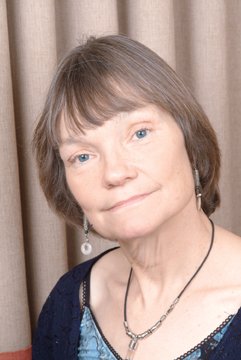 Pretty much the entire class loved “Glenn,” as did our instructor that week, Mary Rosenblum. Mary attended Clarion West herself in 1988; here’s her site, her blog, her Wikipedia entry, an excerpt from the interview Locus Magazine conducted with her, and the opening of her awesome story “Lion Walk,” published in January 2009 by Asimov’s. You might know Mary by her sometimes (open) pen name, Mary Freeman, which she used to write the Gardening Mysteries series.
Pretty much the entire class loved “Glenn,” as did our instructor that week, Mary Rosenblum. Mary attended Clarion West herself in 1988; here’s her site, her blog, her Wikipedia entry, an excerpt from the interview Locus Magazine conducted with her, and the opening of her awesome story “Lion Walk,” published in January 2009 by Asimov’s. You might know Mary by her sometimes (open) pen name, Mary Freeman, which she used to write the Gardening Mysteries series.
Here’s some of Mary’s wisdom, according to the paraphrases in my notes. Hopefully I won’t misrepresent anything she said.
- The stuff you write when you feel you’re writing poorly is basically as good as the stuff you write when you feel you’re writing well. Keep writing even when you feel you’re writing poorly.
- The fiction market is undergoing radical changes. Stay on top of electronic publishing.
- Show characters’ opinions on settings. This is one way to sneak in backstory.
- Watch people’s body language in real life. A lot.
- WHY WHY WHY. You need to figure out your characters’ motivations, the worldbuilding details, everything. You might not end up explaining them in the story, but never be vague on them yourself.
- Sometimes showing very (physically) small details evokes a lot of emotion.
- Mary’s Rule of Three: each scene should deepen character, enrich setting, thicken plot.
- Exercise: Walk into an unfamiliar space, look around for no more than 30 seconds, walk out, and write what you remember–and write an additional take from your character’s POV. Such a description will often give you more emotion than if you’d meticulously observed the setting. Worst are “catalogue” settings (“there were 3 chairs, 4 light bulbs…”)
In the one-on-one conference, Mary was very complimentary, and her words inspire me to this day. The one-on-one conferences, oddly perhaps, were one of my favorite aspects of the workshop, and I feel I learned quite a lot in them.
 Now, the workshopping vibe. Probably Clarion West should take thickness measurements of people’s skin before and after the summer. I toughened up a lot. Also I learned a lot about tact. There are people who busily pat themselves on the back about how they give such ‘brutally honest’ opinions, but that usually makes the critiqued person shut out the critiquer. You can dish it out effectively and respectfully without being a brute. Takes practice, though. The flip side of this: by Week 6 I for one — and maybe only for one — felt that our class had descended too much into lovey-dovey softness. That might have been something idiosyncratic to our class, though, because even the administrators pointed out that our class all got along startlingly well. Most of the time. Sociologists would love Clarion West: a little bit of Zimbardo, a lot of Elysium. Like a reality TV show — only it’s actually real.
Now, the workshopping vibe. Probably Clarion West should take thickness measurements of people’s skin before and after the summer. I toughened up a lot. Also I learned a lot about tact. There are people who busily pat themselves on the back about how they give such ‘brutally honest’ opinions, but that usually makes the critiqued person shut out the critiquer. You can dish it out effectively and respectfully without being a brute. Takes practice, though. The flip side of this: by Week 6 I for one — and maybe only for one — felt that our class had descended too much into lovey-dovey softness. That might have been something idiosyncratic to our class, though, because even the administrators pointed out that our class all got along startlingly well. Most of the time. Sociologists would love Clarion West: a little bit of Zimbardo, a lot of Elysium. Like a reality TV show — only it’s actually real.
Here are some quotes classmates uttered in the course of Week 2’s critiquing.
- “I hated the main character. I wouldn’t let this guy clean the city’s latrines.”
- “Should you build in redundant systems in case of reader failure?”
- “Heal myself or heal this guy? F*** him!”
- “Women are all the time going home with men they shouldn’t be going home with.”
- “So, why does he give her life? Is he just a warlock d***ing around with nothing else to do on a Sunday night?”
- “I was waiting for the speculum to be busted out — I don’t necessarily know what a speculum is.”
At the end of the week, we all attended our second party; everybody attends a party each workshop weekend, even Week 6. The parties were fun; some socialized more skillfully than others. All was lovely. But the next week,

aliens broke into our space station’s hull …
This post is the fourth in a series of ten about my experiences at Clarion West Writers Workshop (Wikipedia entry) as a 2008 class member. I’ll talk about the workshop’s...
October 1st, 2009 — Interviews, Visual Art
Depression and a dislike of rules led Fernando Ochoa of Uruapan, Michoacan, México to drop out of school at age 16, but now at 22, photography lets him share his thoughts and perceptions with the world. “Although situations can leave scars,” he says in his self-taught English, “no matter what passes, the world is still beautiful.”

"Mix"
“In ‘Mix’ I did a zoom in-out. I guess it’s more like a gaze to things. Actual living goes too fast, I think we should pace out sometimes, look around nature and focus our minds. Sometimes it gets like a mass of thoughts, that most of the time are useless, and you just have to let them go.”
At age 18 Ochoa “was playing the photographer” and told his father “I want to take pictures.” His father, a hobbyist photographer himself, approved. He encouraged his son to join an online photo forum and upload the photographs he’d started taking. “None of them were good,” Ochoa recalls, “but everyone who commented said I had good aesthetics. That became a challenge for me to take better ones.”

"2 of October"
“When I was younger, I thought what’s the actual hype with this date, the Tlatelolco Massacre … ignorant me, it was about freedom, that government turned out extremely bad, people died. In English the wall says ‘Because the color of blood can’t be ever forgotten, 2 of October, never forgotten.’ We tend to think those days are gone, but they are not.”
From his father, Ochoa learned “the basics: aperture, speed, rule of thirds” so well he has become “kind of a purist.” (Of course, like any good artist, he makes sure to “break all rules.”)
It was due to his own intellectual curiosity, however, that Ochoa learned enough English for his current job as a programmer and sysadmin — and for promoting his photography online. After installing a hotkey program, he was able to translate the English he saw on Internet Relay Chat channels. That helped him learn the language by immersion, “without much knowledge of it,” night after night. “I’m an auto-didact,” he says. “Knowledge is always a good thing.”

"Ricardo"
“Ricardo’s a cousin, I enjoy hanging out with him, everytime he comes to this city I invite him over my house, or we go to different places. He lives far from this city, in Monterrey.”
In cyberspace he’s traveled the world, but Ochoa hopes to someday see more than México in meatspace, too. Life is “about seeking more and more,” he explains; it’s “about pushing the ‘you’ to accomplish things.” He already understands art and humanity are about “empathy, mainly,” whereas as individuals we sometimes become “immersed too much in ourselves.”

"Fernanda"
“Oh, she’s my sister, my name is Fernando, her name is Maria Fernanda, I enjoy talking to her a lot, she was always constant company to me during childhood and still.”
México doesn’t bore him, however. Ochoa says he also has “to learn more about roots.” Some give the credit for Uruapan’s founding to Franciscan friar Fray Juan de San Miguel; others point out that the P’urhépecha Indians predated him. Ochoa does not hesitate: “the P’urhépechas. The whole language is there, the traditions, the native people.”

"Cross"
“That’s a sign with power, I had to represent it with a good blue sky. I took it from a different angle, so it looked wide-angle.”
Asked about his photography equipment, Ochoa responds, “It’s in the eye most of the time, sometimes it’s not dependent on equipment — you can make good photos with a 3MP camera. I use mostly DSLR’s, like a Nikon D70 or Nikon D300, since I can manipulate all settings, and they’re digital. I rarely use tripod, just for landscapes. So it’s me with the camera mainly. I shoot all in color, then I convert them to black and white if needed, then I use mostly curves for how the black and white will be shown. Sometimes real manipulation is needed, but I’m a purist in the sense of leaving all in its place.”

"Cat"
“I took this photo around two years ago. I had to represent my feeling I guess, I get somewhat fed up at times.”
Ochoa gives photography “as much effort” as he can. While many “don’t tend to explore further what can they do, what they cannot,” he does, and he will. He says he’d “love to go to an art school or by some other way learn more and more about photography.”

"Self Portrait"
“We are constantly struggling with feelings that aren’t supposed to be there, we feel rather overwhelmed if we say we have a mental illness, but people stare and respond, ‘Are you serious?'”
For Ochoa, observation is a way to “immerse himself” in the world instead of losing himself in mental rumination. With his photography he hopes to “open broad” the constant question — Who am I? — and evoke actual emotion and community.
You can see much more of his portfolio at his website, where you can email him or subscribe to his feed of new photos.
Depression and a dislike of rules led Fernando Ochoa of Uruapan, Michoacan, México to drop out of school at age 16, but now at 22, photography lets him share his...








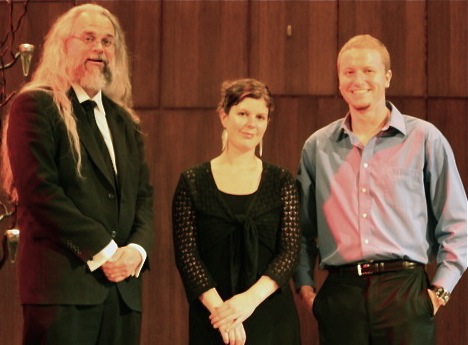




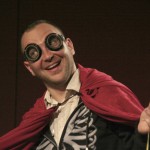

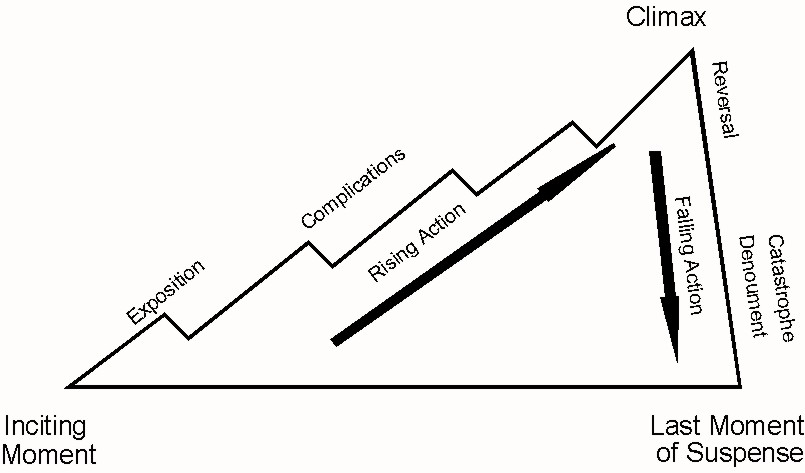
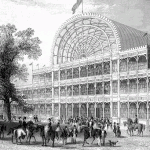













 Twitter:
Twitter:
Join the conversation